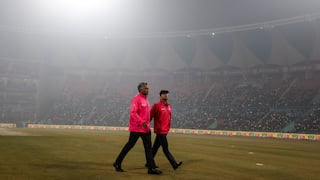Weather Update: Comfortable Weather Conditions In Delhi To End, Day Temperature To Touch 42 Degrees
The mercury is predicted to rise over the next four to five days but there is no forecast of a heatwave for another week.

New Delhi: The maximum temperature in Delhi rose marginally on Friday, but settled within the comfortable range. The Safdarjung Observatory, Delhi's base station, recorded a maximum temperature of 39.3 degrees Celsius, a notch below normal for this time of the year.
It was 36.7 degrees Celsius on Thursday and 34.4 degrees Celsius on Wednesday.
The minimum temperature settled at 25.5 degrees Celsius.
The mercury is predicted to rise up to 42 degrees Celsius over the next four to five days but there is no forecast of a heatwave for another week.
Meanwhile, the southwest monsoon is expected to reach Kerala in the next two to three days, marking a sluggish start to the seasonal rains that are the lifeline of India’s agri-based economy. Earlier, the India Meteorological Department (IMD) had forecast the onset over Kerala on Friday (May 27) with help from the remnants of Cyclone Asani that struck the Bay of Bengal a fortnight ago. The forecast had a model error of four days.
However, the influence of the remnant weather systems, that lingered over the southern peninsula, petered out, dashing the forecast of early onset over Kerala and a swift progress towards the north, the IMD said. “As per the latest meteorological indications, westerly winds have strengthened in the lower levels over the south Arabian Sea and deepened. As per satellite imagery, there is an increase in cloudiness over Kerala coast and adjoining southeast Arabian Sea. Hence, conditions are becoming favourable for monsoon onset over Kerala during the next 2-3 days,” the IMD said.
The weather office declares the onset of monsoon over Kerala if 60 per cent of 14 weather stations in Kerala and Lakshadweep receive 2.5 mm or more rainfall for two consecutive days, aided by favourable windfield and outgoing longwave radiation.






































